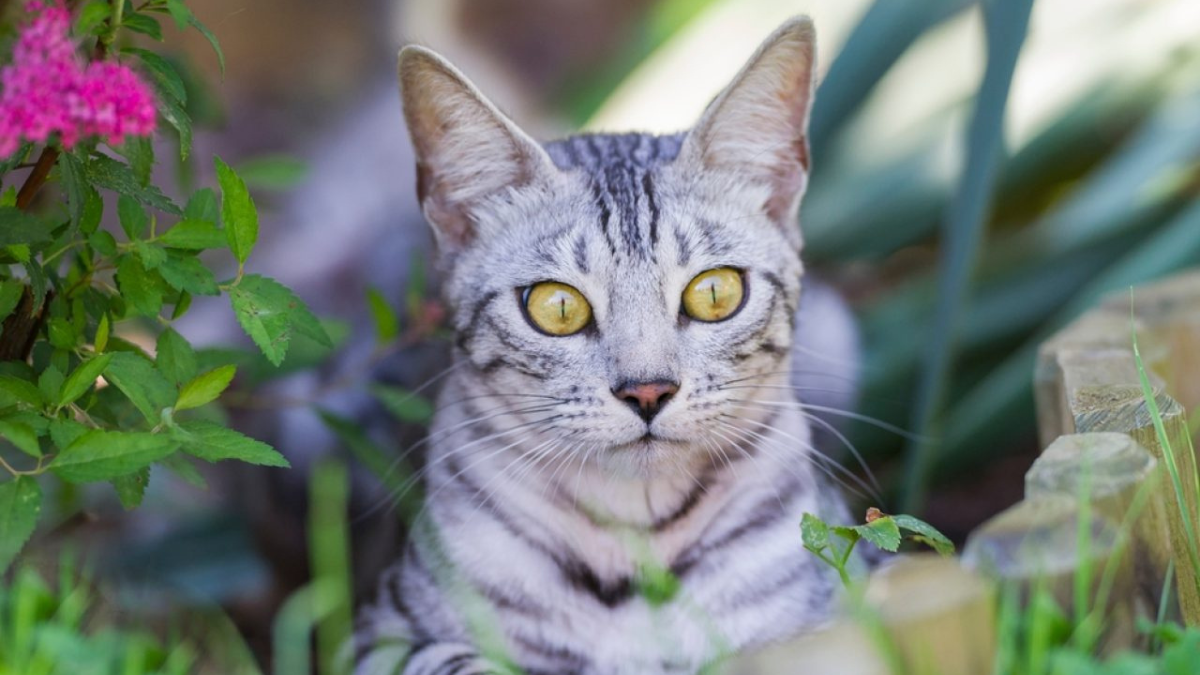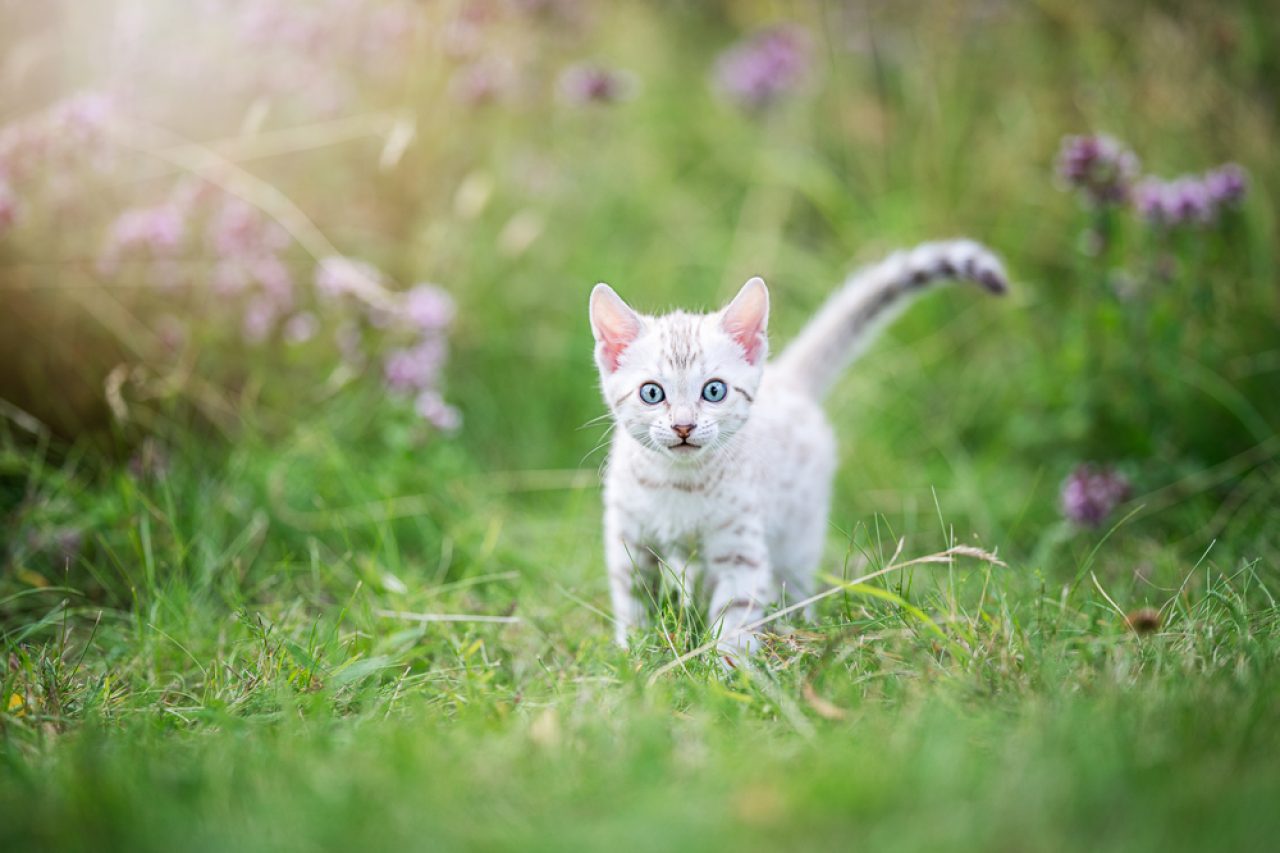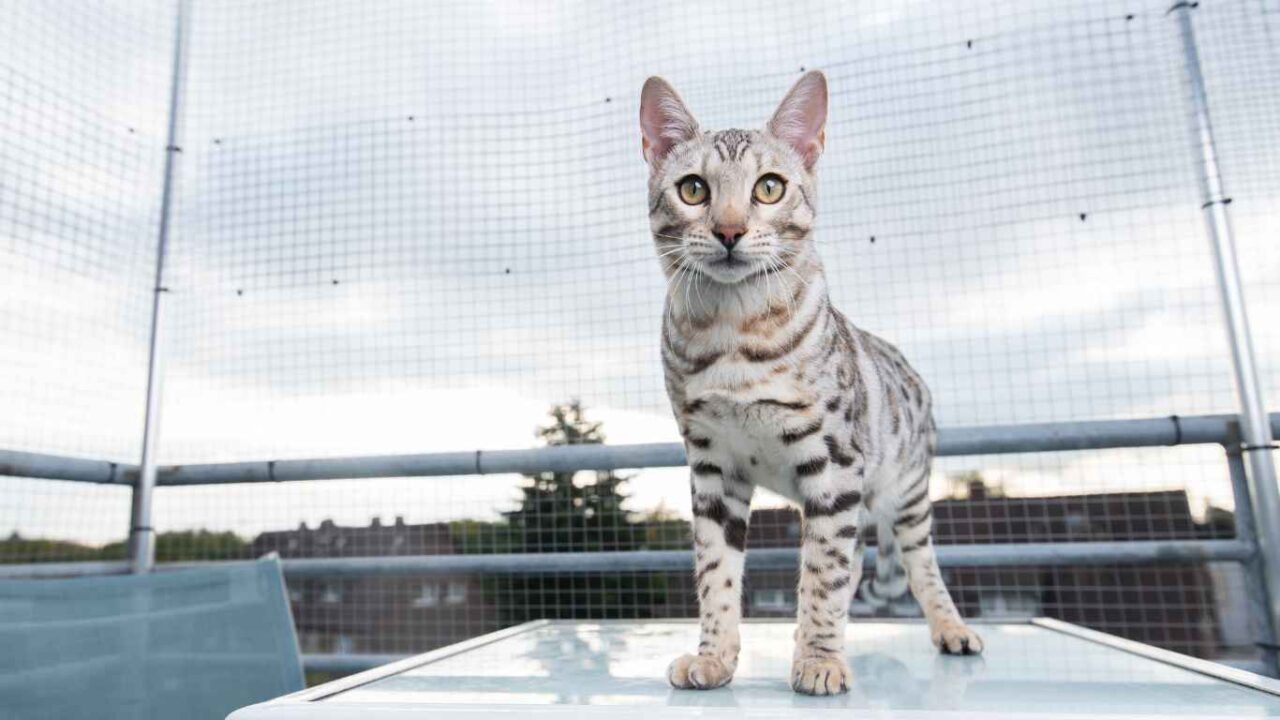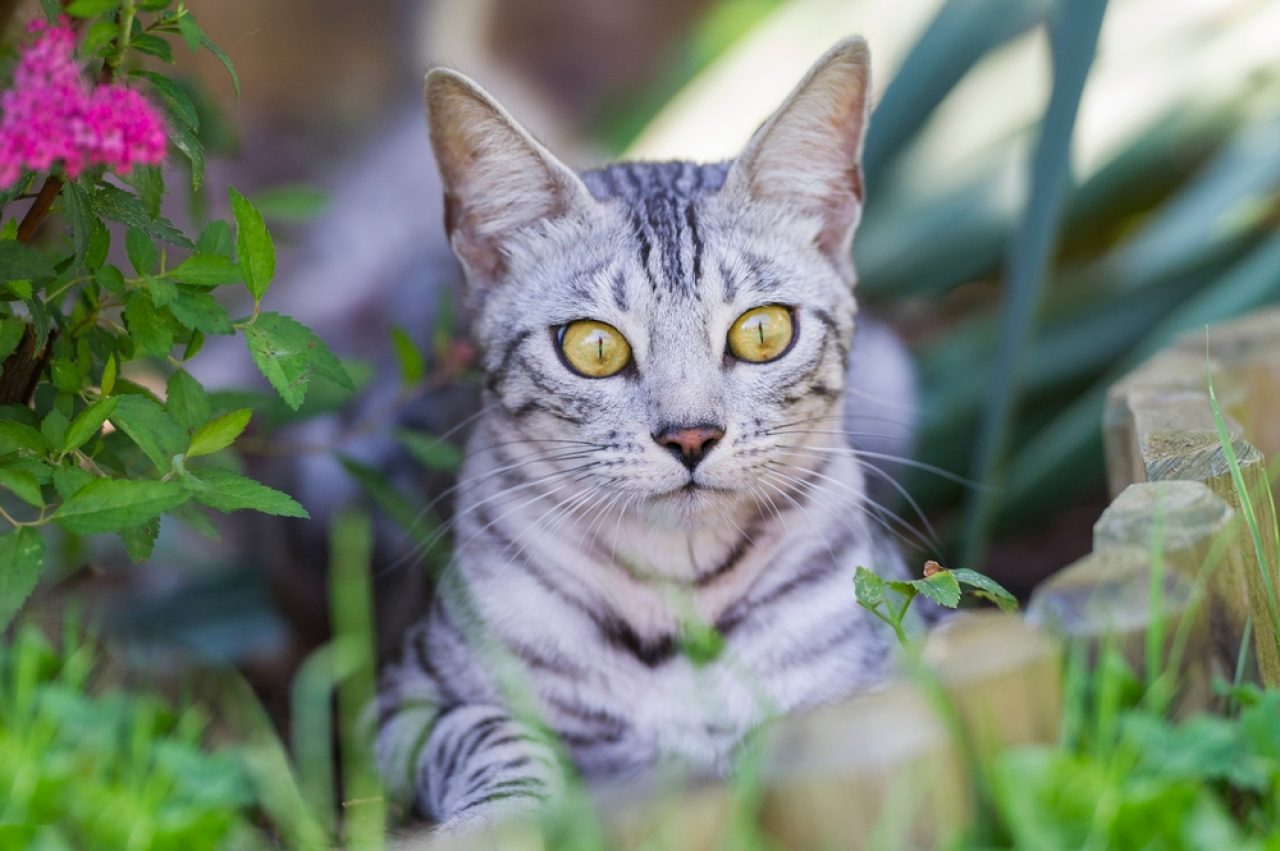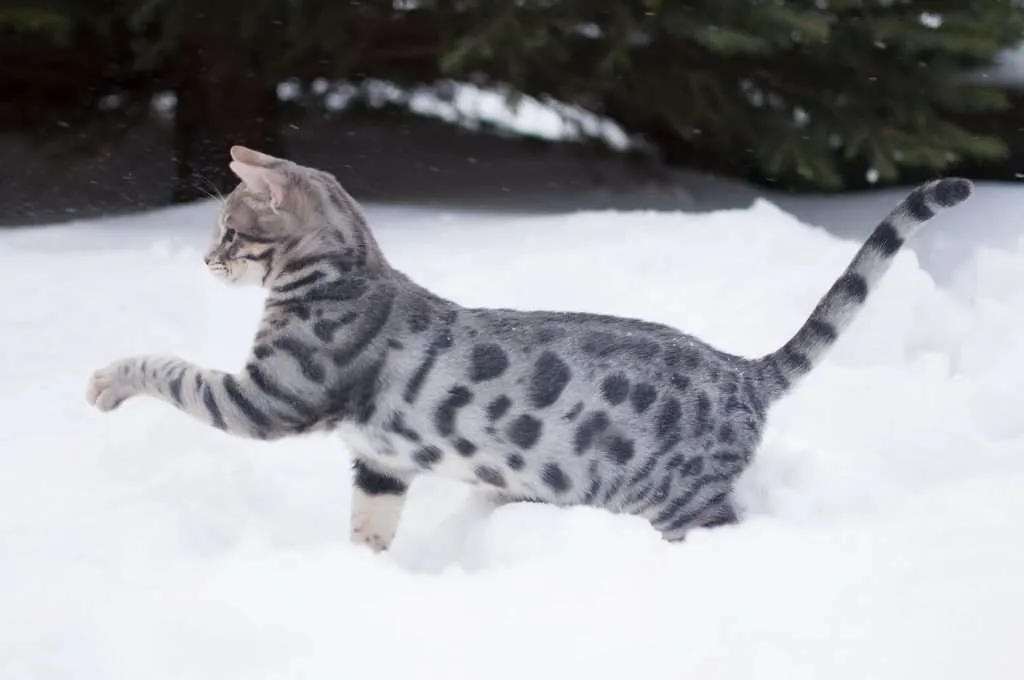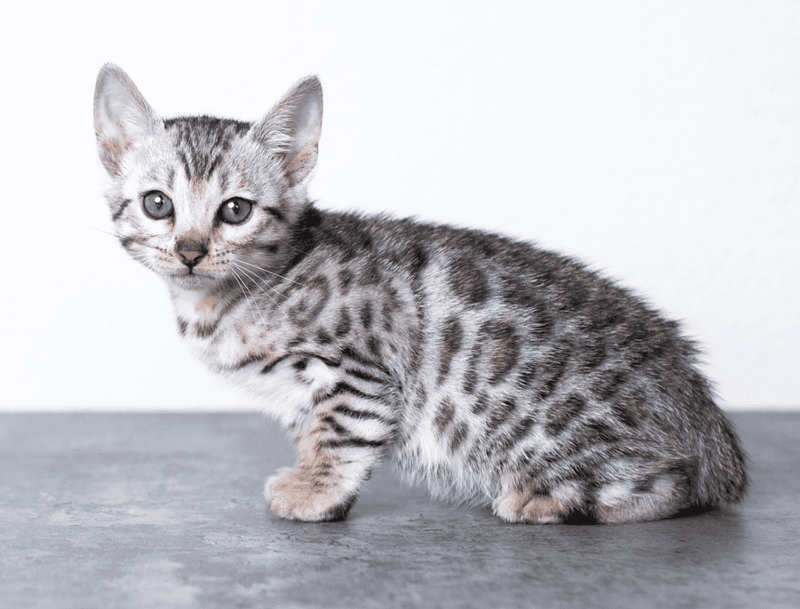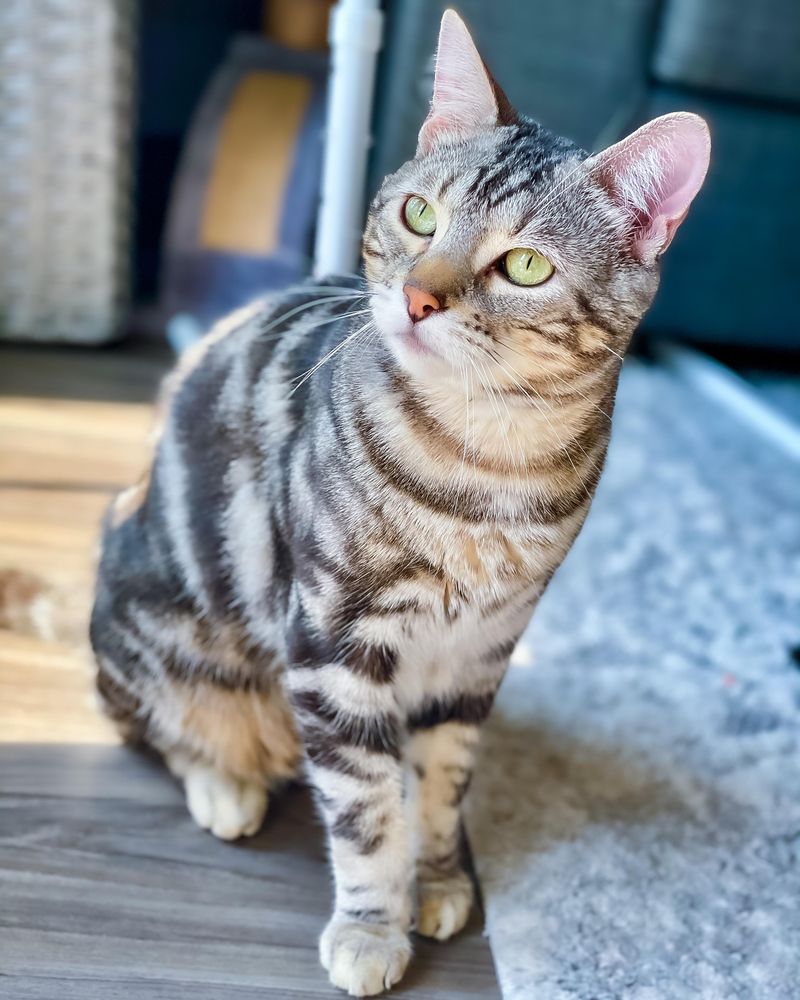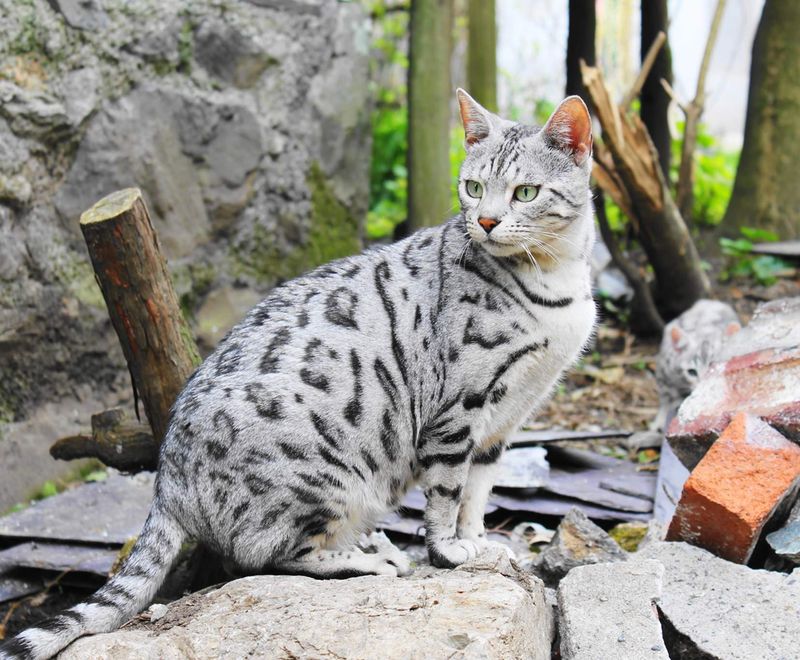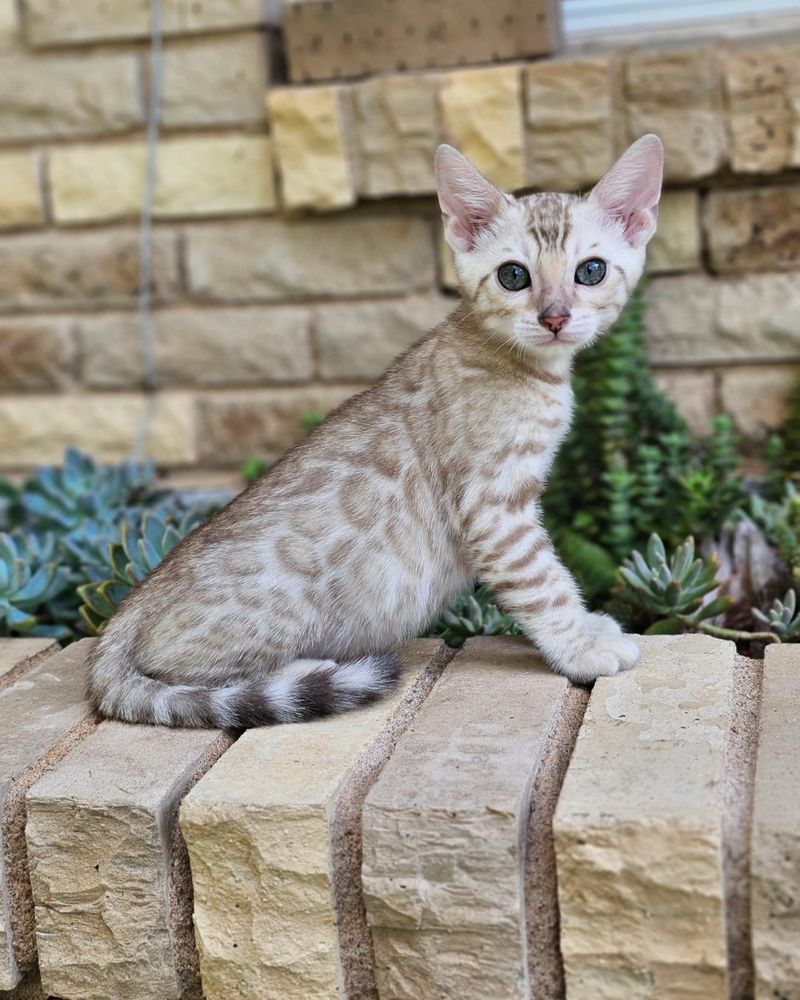📖 Table of Content:
Growing up, my family was obsessed with high-maintenance fluffers. Now, they weren’t looking for those bound to keep everyone up at night or fight with unassuming neighborhood tabbies. Nope, they appreciated the odd and the mysterious ones a little too much. Turns out, that’s how you end up with a Silver Bengal cat on your hands!
And boy, do we have tales galore about the mischievous frolics these not-so-little munchkins are bound to put you through! Don’t get me wrong, Silver Bengals are some of the most affectionate, appreciative, and absolutely adorable breeds out there. Nonetheless, they’re a force to be reckoned with.
Trust me, caring for a Bengal (let alone a Silver Bengal) might have been the toughest, wildest, and most worthwhile thing we’ve ever done. Without a doubt, that boisterous beast was pretty much the epitome of a sledgehammer storming through our apartment, leaving us wanting more.
For reasons I’ll never know, we were delighted to become a construction (or destruction) site for the likes of such a curious creature. We wouldn’t have changed a thing regardless of how territorial, energetic, or demanding that shimmering, Liliputian leopard wanted us to believe she was.
If you’ve read this far, chances are you’re thinking of getting a Silver Bengal cat yourself and that’s why you’ve been torturing your search engine with questions such as “Are Silver Bengals better than regular Bengals?” and “Can Silver Bengals hurt you when you’re asleep?”
Oh, you’re lucky to have stumbled upon the article that’ll provide you with pretty much everything you need to know about these wild, rosette-patterned bundles of energy! And don’t worry, they’re much better than anything you might have painted them to be!
1. Silver Snow
Let’s talk science once more! A regular Silver Bengal (as we mentioned) is a brown cat with the silver inhibitor gene inhibiting the warm colors, making them appear silver. But a Snow Bengal with the silver inhibitor gene makes for the most adorable Silver Snow Bengal kittens. And they can appear with different colored coats, too!
Depending on the type of Snow Bengal that holds the silver inhibitor gene, her kittens can appear as silver seal-lynx, silver-mink, and silver-sepia. Whatever color combination or pattern you get your hands on, Silver Snow Bengals are as pretty as a picture! Trust me, there’s no going wrong with any of them. Other than the hefty price you might have to pay, depending on the rareness level of these beauties, of course!
2. Silver Charcoal
Now, we’re moving on to the dark side of things, with Silver Charcoal being a lot darker than Silver Snow! Silver Charcoal, as you might have guessed, looks like Brown Charcoal with a lighter undercoat because of the silver inhibitor gene. The gene lightens the undercoat, the stomach, and part of the face, creating what’s known as Zorro markings.
Silver Charcoal Bengal cats are as mysterious as you might think! With Zorro markings covering the face and the darker-than-night rosette pattern scattered over the body, these beauties are a sight for sore eyes. They’re also often mistaken for our next color combination – the Silver Smoke.
3. Silver Smoke
On the off-chance you catch a glimpse of a Silver Smoke Bengal cat roaming around your neighborhood, don’t panic! She might look like a Black Panther. But she’s an affectionate, appreciative kitty that’s probably only looking for cuddles and snuggles.
That’s right, a Silver Smoke (often referred to as “melanistic”) looks like a solid-color cat because of the black undercoat and black rosette markings. The only way you can notice the slight shade difference is to come closer and “ruffle her feathers” – at your own risk, of course. To tell the truth, the “ghost markings” are slightly different than the undercoat because of the inhibitor gene that’s making the undercoat lighter. However, to the untrained eye, Silver Smoke Bengal cats will always look like pocket-sized panthers.
4. Silver Blue
In the animal kingdom, blue refers to the shade that appears when the color black gets genetically diluted. And, when you combine that shade with the silver inhibitor gene, you get a Bengal that’s light bluish-gray with dark bluish-gray markings.
What makes Silver Blue Bengals even more appealing is the fact that they’re pretty much never tarnished. While Blue Bengals tend to have peach undertones, the silver inhibitor gene takes care of that.
5. Silver Spotted Bengal
The Silver Spotted Bengal is renowned for its exquisite coat that gleams with a metallic sheen, adorned with stark dark spots. These spots mimic the pattern of wild leopards, making them a miniature version of their wild cousins. This Bengal variant is lively and requires plenty of playtime.
Owners often find themselves enchanted by their intelligent antics and affectionate demeanor. Despite their wild appearance, they adapt well to home life, provided they have enough stimulation. Interactive toys and engaging activities are a must to keep them happy and healthy.
6. Silver Marble Bengal
With their marble-like swirls and intricate patterns, the Silver Marble Bengal cat is a true work of nature’s art. Their coat features a beautiful mix of silver and deeper hues, offering a striking visual display. Agile and inquisitive, they’re always up for exploring the world around them.
This breed is not just beautiful but also incredibly social. They thrive in environments where they receive constant interaction and affection. Whether they’re exploring new spaces or playing with their favorite human, Silver Marble Bengals are always on the move, bringing joy to their families.
7. Silver Rosetted Bengal
Adorned with large, dramatic rosettes on a radiant silver coat, the Silver Rosetted Bengal is a stunning sight. The rosettes add a beautiful three-dimensional texture to their coat, amplifying their visual appeal. Known for their playful nature and graceful demeanor, these cats are both lively and noble.
These Bengals are full of energy and require space to roam and explore. They form strong bonds with their owners, often seeking out companionship and play. Providing a stimulating environment is key to keeping these intelligent cats both mentally and physically satisfied.
8. Silver Tabby Bengal
With a shimmering silver coat and bold rosette patterns, the Silver Tabby Bengal is a breathtaking sight. This active and playful cat is always filled with energy, eager to embark on any adventure. Whether it’s climbing or chasing, the Silver Tabby Bengal is never short on curiosity.
These cats thrive in environments where they can explore and entertain themselves. Their agile bodies and keen senses make them exceptional companions for interactive play sessions. Friendly and social, they bond quickly with family members, providing endless amusement and affection. Indeed, the Silver Tabby Bengal is a delightful addition to any home.
